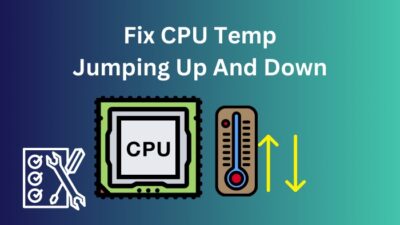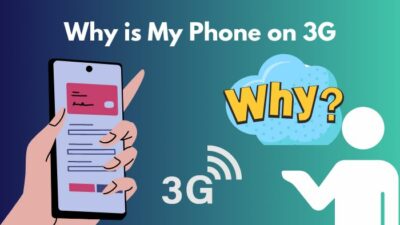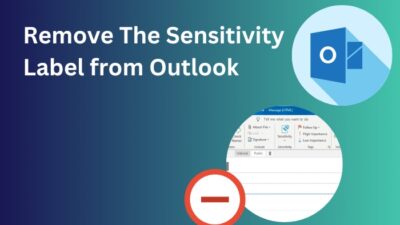Weather plays a significant role in satellite internet connections.
Due to how satellite internet works, an adverse change in weather can lower the speed, bump up the latency or, even worse, disrupt the connection.
This article will elaborate on how Starlink internet responds to varying weather conditions.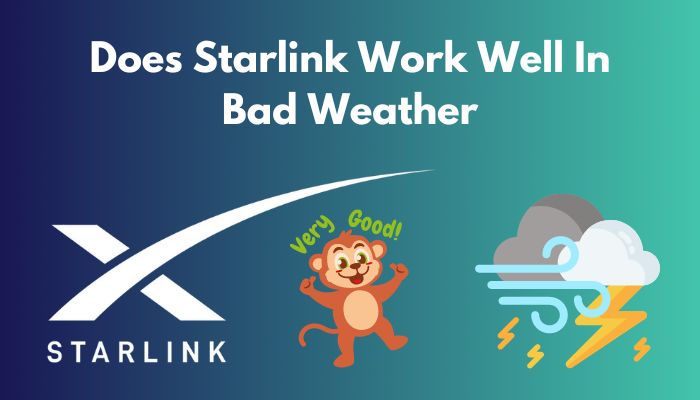
After going through the entire post, you will have a clear idea about the impact of weather on Starlink’s internet.
Then you will be able to make a well-thought decision if Starlink is the right choice for your location and its weather conditions.
So keep reading the post till the end.
Does Starlink Work Well In Bad Weather?
Weather plays a crucial role in determining the performance of the satellite internet connection. Contrary to a broadband internet connection (which connects to your house through wires), a satellite internet connection wirelessly connects to the end user.
More specifically, a dish placed in an open area around your house will communicate to the satellite up in the sky. Since the data is traveling through the open air, certain weather conditions can have an impact on the internet performance or even disrupt it.
Traditional satellite internet providers use geostationary satellites. Geostationary satellites orbit the Earth at the same speed as Earth’s motion so that a single satellite can serve a specific location the entire time.
A satellite has to be placed at a high altitude to make it geostationary.
But that’s not the case with Starlink, as Starlink uses low Earth orbit satellites to serve the internet. Low Earth orbit satellites cannot move at the same speed as Earth’s motion.
The benefit of using low Earth orbit satellites is that the data has to travel less distance than it would on geostationary satellites.
It is one reason Starlink is able to serve better internet connection than traditional satellite internet providers with low latency. Of course, there are other technologies as well.
As the data travels less distance in Starlink, it is less susceptible to weather conditions than traditional satellite internet connections.
The Starlink dish has an ice melting feature to stop snow/ice buildup in the winter. The hydrophobic coating on the dish makes water slide off the top.
But still, Starlink being a satellite internet connection, certain weather conditions have a significant impact on the internet performance.
Certain weather conditions will decrease the SNR (signal-to-noise ratio) value. A higher SNR value means there is less noise in the internet signal, hence the excellent connectivity. A low SNR value indicates the amount of noise or distortion in the signal is high, resulting in an unsteady or slow internet.
Traditional satellite internet connections are prone to most weather conditions such as rain, wind, fog, snow etc. But Starlink internet does not go down with heavy wind or moderate fog. Light rain and snow also do not significantly impact the Starlink internet performance.
However, heavy rain or storm, heavy snowfall and dense fog will block signals or increase the noise in the signals. As a result, the internet will be negatively affected.
The speed will go down, latency will be high, there might be packet losses, and in some cases, the connectivity will be cut off for the time being.
A broadband connection will always be the better option when you consider weather conditions. But as it is hard to get a decent broadband connection in rural and remote areas, Starlink seems like the best option for now. Among the available options in remote areas, Starlink appears to give the most decent internet connection in such places.
But before that, go through our epic guide on how to find out if starlink is available in your area.
How Starlink Internet Performs In Different Weather Conditions
Satellite internet connections are sensitive to weather change. A slight change in the weather conditions can lead to substantial performance differences.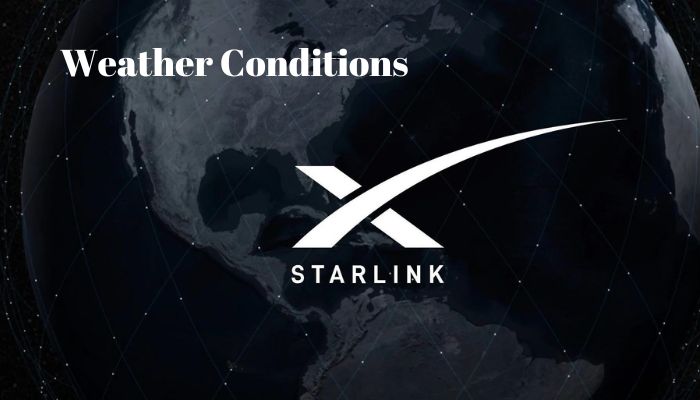
Satellite internet providers like HughesNet and Viasat use geostationary satellites. These satellites are located in higher orbits. Hence the signal needs to travel a long distance and is consequently more prone to bad weather.
On the other hand, Starlink uses low Earth orbit satellites where the signal travels significantly less distance. Hence Starlink is less prone to bad weather.
Starlink also has some neat features like hydrophobic coating on the dish and an ice-melting mechanism, which further help in the process.
But still, at the end of the day, Starlink is a satellite internet connection. So bad weather will have more impact on it than it would on broadband internet.
Currently, the Starlink satellites connect to the internet through the ground stations. So a nasty weather condition in the ground station area can also decline the internet connection.
In the future, when Starlink deploys a large number of its 42000 satellites, the satellites will communicate between themselves, relying less on the ground stations. It will be a while before it goes into full effect, as Starlink has only deployed around 1500 satellites in orbit.
Below is a brief description of how Starlink internet performs under different weather conditions:
1. Rain
Light rain or drizzles has almost no impact on the Starlink internet connection.
But medium to high rain will decrease the SNR (signal-to-noise ratio), and the internet performance will deteriorate. Starlink has taken some measures to reduce the negative impact but it’s not eliminated altogether.
During medium rain, you will face packet losses, higher latency and slower speeds. Don’t worry about water accumulation at the dish, as the dish has a hydrophobic coating, making the water slide off the sides.
Heavy rain will disrupt the internet performance severely. You might even face outages during continuous heavy downpours.
During medium to heavy rain, dense clouds are present in the sky. These thick clouds with high volumes of moisture will block or weaken the signal, further reducing internet performance.
Read more on Can You Cancel Starlink Internet Anytime.
2. Winds
If you have mounted the dish securely, the wind will not have an impact on the Starlink internet.
Since Starlink uses low Earth orbit satellites, the dish has to communicate with different satellites throughout the day. The dish constantly keeps track of the closest satellite and maintains a connection with it.
So the dish has a motor on its base. The motor works to orient the dish in the direction of the satellite it is currently connected to. However, the Starlink dish has a wide field of view, eliminating the need to constantly move the dish in the satellite’s direction.
That’s why the dish moves only a little. Strong wind won’t significantly impact the internet unless the dish gets knocked out of its position.
You may also like to read: Starlink for Gaming-Is It Good or Bad.
3. Lightning and thunderstorms
Lightning and thunderstorms will reduce the performance of Starlink’s internet.
During thunderstorms, thick clouds are present in the sky. The high-density clouds will block the signal, reduce internet speed, and increase latency.
These thick clouds will also create rain. Downpour during the thunderstorm will further deteriorate the internet performance by decreasing the SNR (signal-to-noise ratio).
You need to be careful of the lightning too. As the Starlink dish needs to be exposed to the sky as much as possible, most users mount it on the roof of their house or some other higher position.
It makes the dish more likely to attract a lightning strike. Hence enough measures should be taken regarding surge protection and grounding/earthing.
You need to consider some lightning protection systems to protect the dish and other components. Starlink dish uses high-quality components, but a decisive lightning strike can fry the components.
You may also like Starlink Vs. HughesNet.
4. Clouds
We have already discussed thick clouds during storms and rainy days. As thick clouds contain high moisture and are dense, they will decrease the SNR (signal-to-noise ratio) and consequently the internet performance.
Aside from thick clouds, light clouds on a moderately cloudy day will not affect Starlink’s internet. The different technologies used to increase the SNR will cover up any small impact the light clouds have on the Starlink internet.
So you should be able to enjoy Starlink’s internet without any issues on a cloudy day.
5. Fog
A bit of foggy weather will not pose any harm to Starlink internet, unlike traditional satellite internet connections.
However, heavy, dense fog will contain a high amount of moisture, decreasing the SNR value and thus deteriorating the internet performance. So you can expect slower speeds and increased latency during heavy fog.
6. Snow and ice
Light snow will not cause any trouble to your Starlink internet.
But heavy snowfall means a decent amount of air moisture and high humidity. It will have a negative impact on the SNR value.
Starlink has thought of snow buildup on the dish. The dish has a snow-melting functionality to prevent snow buildup. Then the hydrophobic coating on the dish helps to roll the water off the dish.
However, in extreme cold, the water could refreeze and form icicles. If snow and ice form at the base, it might damage some internal components.
If ice freezes the motors, it will prevent the dish from orienting itself to the satellite, damaging the motors.
So, Starlink’s internet performance will stay normal during a light snowfall. But heavy snowfall and snowstorms will decrease internet performance and might even cause some damage.
Final Thoughts
Starlink is sensitive to weather conditions as it is a satellite internet connection. But compared to other satellite internet providers like HughesNet and Viasat, Starlink does a better job of handling bad weather.
Starlink gives a decent internet connection in some weather conditions like fog and rain, where traditional satellite internet providers fail to.
In the more intense weather conditions, the Starlink internet connection slows down or gets cut off for the time being.
